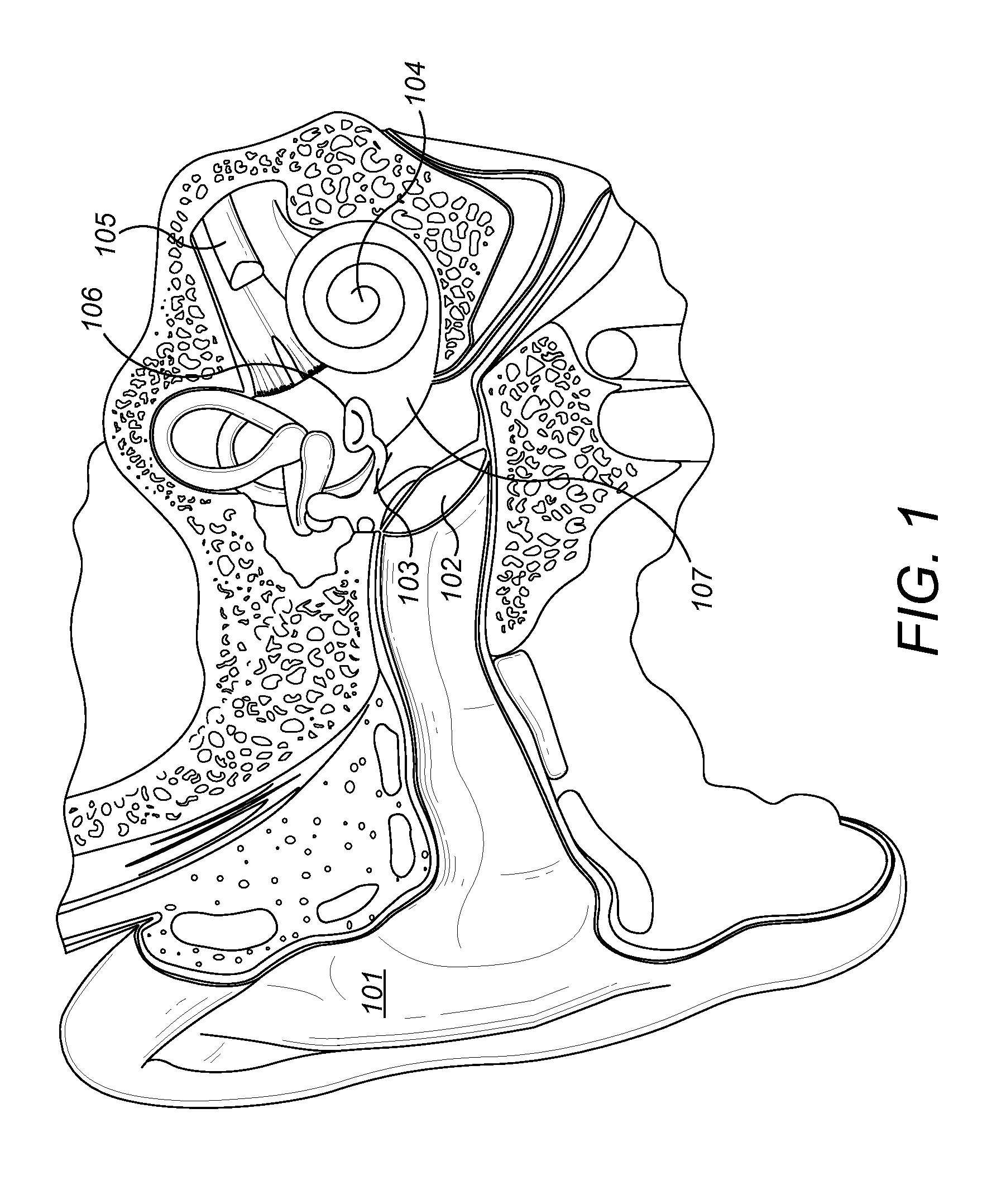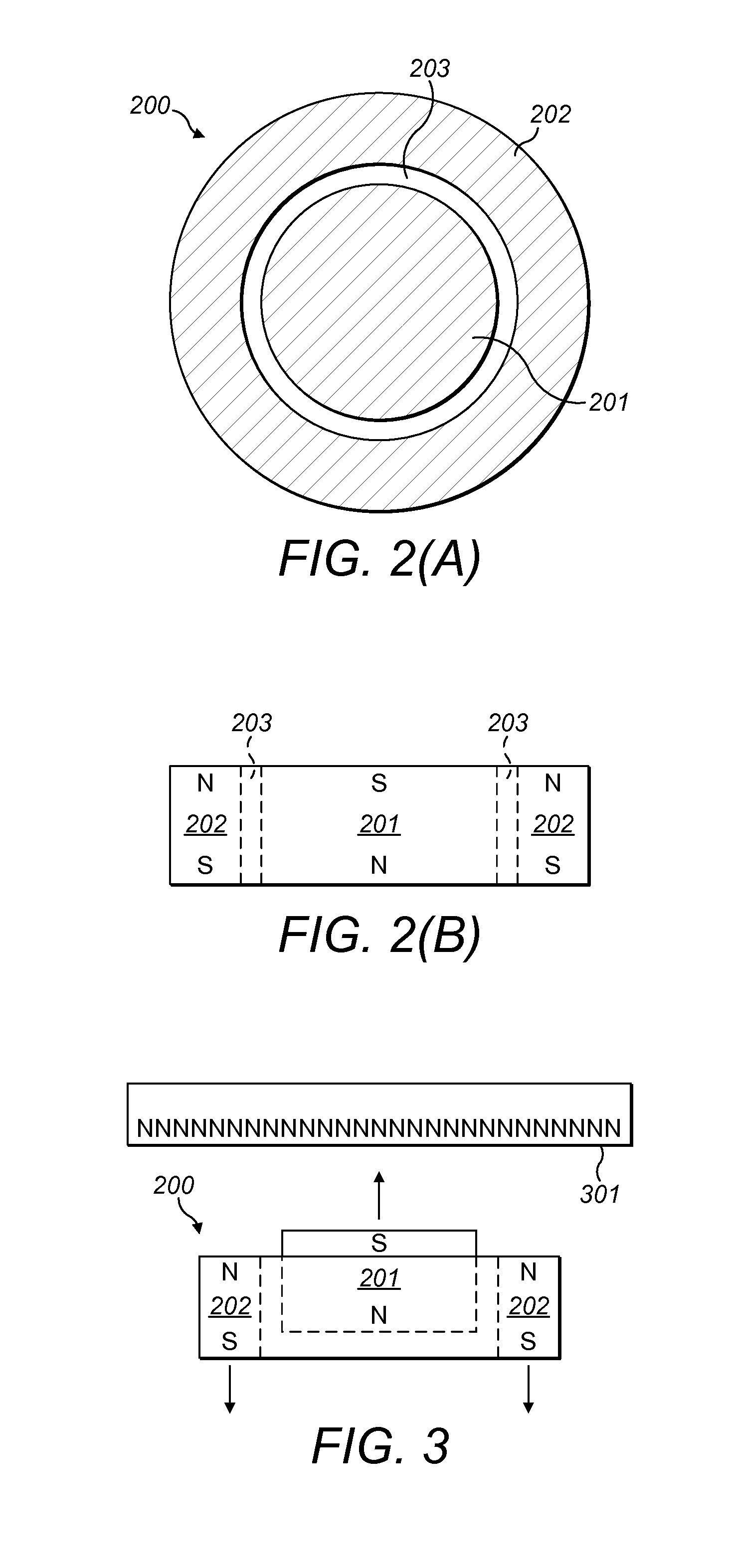Magnet arrangement for bone conduction hearing implant
a bone conduction and implant technology, applied in the field of medical implants, can solve the problems of affecting the normal position of the magnet or the whole implant housing, and damage to adjacent tissue in the patient,
- Summary
- Abstract
- Description
- Claims
- Application Information
AI Technical Summary
Benefits of technology
Problems solved by technology
Method used
Image
Examples
Embodiment Construction
[0023]Embodiments of the present invention are directed to an implantable MRI-compatible magnetic arrangement for a simple cheap and small-size mechanical transducer such as for a bone conduction hearing implant. The magnetic arrangement includes multiple permanent magnets wherein adjacent magnets have opposite magnetic polarities. One or more suspension elements (e.g. silicone, membrane, etc.) resiliently couple adjacent magnets to allow their relative movement. The resulting magnetic transducer thus forms a coupled oscillating system with an external magnetic drive component above the skin of the patient to develop a mechanical stimulation signal to the implant housing surrounding the magnets for delivery by bone conduction of the skull bone as an audio signal to the cochlea of the patient.
[0024]FIG. 2 A shows a top plant view and FIG. 2B shows a side cross-sectional view of a magnetic arrangement 200 for a hearing implant according to one specific embodiment. An inner cylindrical...
PUM
 Login to View More
Login to View More Abstract
Description
Claims
Application Information
 Login to View More
Login to View More - R&D
- Intellectual Property
- Life Sciences
- Materials
- Tech Scout
- Unparalleled Data Quality
- Higher Quality Content
- 60% Fewer Hallucinations
Browse by: Latest US Patents, China's latest patents, Technical Efficacy Thesaurus, Application Domain, Technology Topic, Popular Technical Reports.
© 2025 PatSnap. All rights reserved.Legal|Privacy policy|Modern Slavery Act Transparency Statement|Sitemap|About US| Contact US: help@patsnap.com



